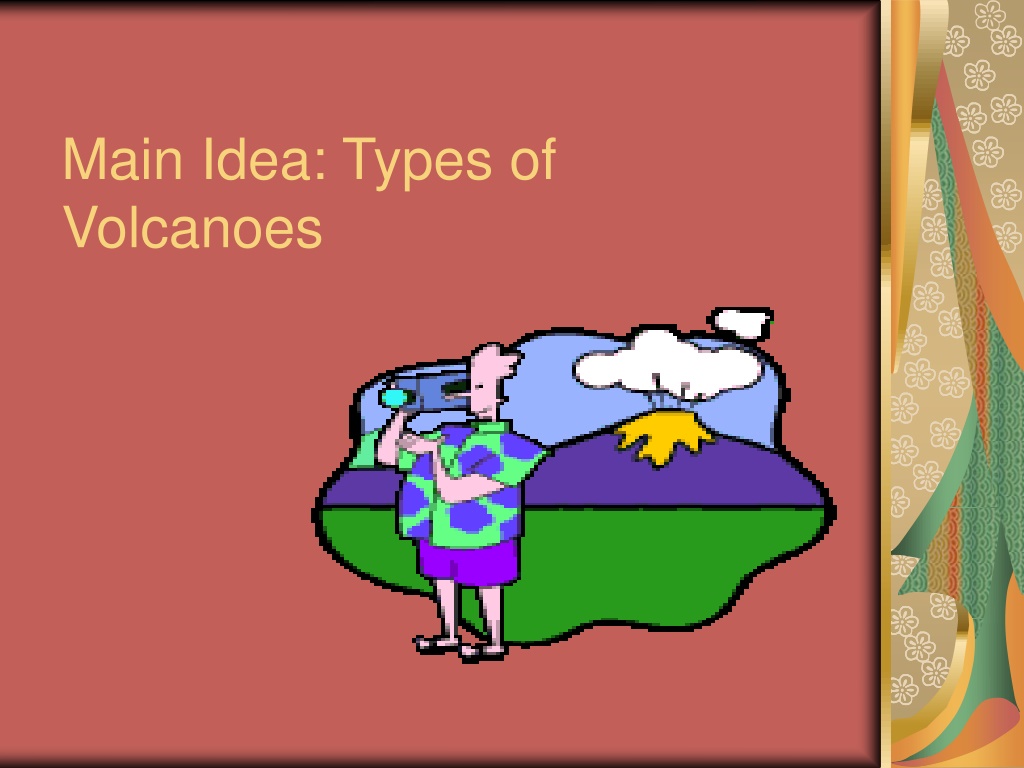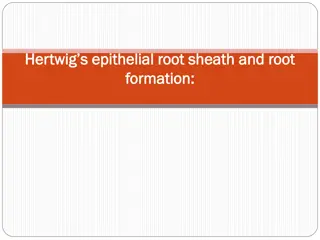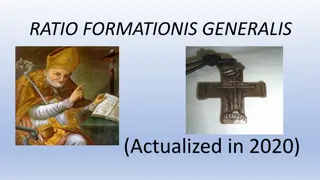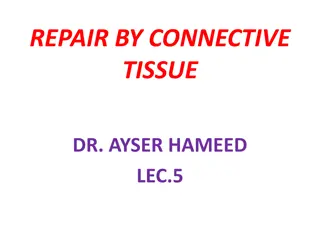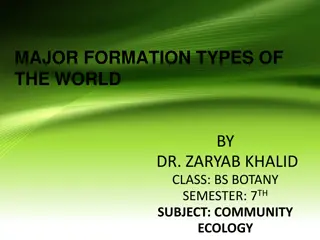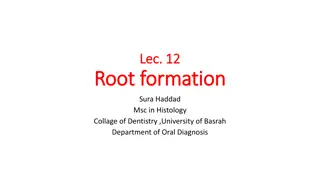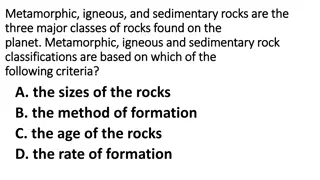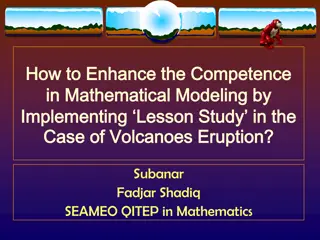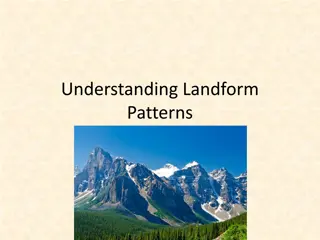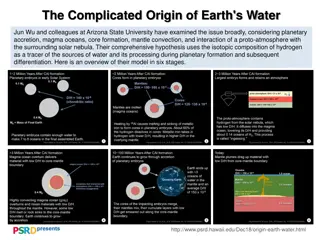Types of Volcanoes and Their Formation
Explore the unique characteristics and formation processes of shield, cinder-cone, and composite-cone volcanoes. Learn about their sizes, eruption styles, and locations on Earth, including along plate boundaries and hot spots.
Download Presentation

Please find below an Image/Link to download the presentation.
The content on the website is provided AS IS for your information and personal use only. It may not be sold, licensed, or shared on other websites without obtaining consent from the author.If you encounter any issues during the download, it is possible that the publisher has removed the file from their server.
You are allowed to download the files provided on this website for personal or commercial use, subject to the condition that they are used lawfully. All files are the property of their respective owners.
The content on the website is provided AS IS for your information and personal use only. It may not be sold, licensed, or shared on other websites without obtaining consent from the author.
E N D
Presentation Transcript
Main Idea: Types of Volcanoes
A. How does a Shield volcano form? 1. They form when layers of lava accumulate over time. The eruptions are slow and nonexplosive. Shield volcanoes are the largest in size. 2. 3.
B. How does a Cinder-Cone volcano form? 1. They form when lava is ejected high into the air and piles up around the vent. Small in size less than 500 m high. More explosive than shield volcanoes, because magma contains more water and silica. Magma is more viscous, which leads to more gas 2. 3. Cinder cone on Mauna Kea Volcano, Hawai`i. 4.
C. How do Composite-Cone volcanoes form? 1. These volcanoes form when layers of lava alternate with layers of volcanic fragments (ash, tephra). Larger than cinder- cone Are the most dangerous of all volcanoes 2. 3.
D. Where on earth can volcanoes be found? 1. 2. 3. 4. Volcanoes are found along plate boundaries. 80 % on convergent boundaries 15 % on divergent boundaries 5 % occur away from plate boundaries
E. Hot spots 1. Areas on Earth s mantle where high temperature causes sections of earth to rise (Hawaii). The heat melts the rock, which is forced to the surface as magma. The magma melts the crust forming volcanoes. 2. 3.
This powerpoint was kindly donated to www.worldofteaching.com http://www.worldofteaching.com is home to over a thousand powerpoints submitted by teachers. This is a completely free site and requires no registration. Please visit and I hope it will help in your teaching.
